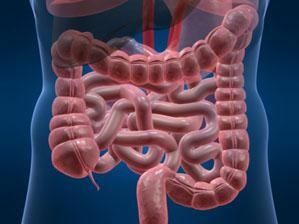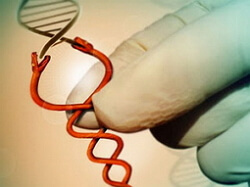Hirschsprung's disease
 Hirschsprung disease is a fairly rare congenital disease that develops as a result of disrupted congenital development of the nerve plexuses that provide innervation of the large intestine. In men, this pathology is found four times more often, the frequency of occurrence according to the data of different research institutes ranges from 1 to 10 cases per 10,000 population. Diagnosis of Hirschsprung disease in 90% of cases is still established for newborn children, and 20% of babies are simultaneously present with other congenital pathologies of the nervous system, genitourinary disorders, diseases of the digestive system and cardiovascular diseases. Ten times more often this disease is observed in children with Down's syndrome
Hirschsprung disease is a fairly rare congenital disease that develops as a result of disrupted congenital development of the nerve plexuses that provide innervation of the large intestine. In men, this pathology is found four times more often, the frequency of occurrence according to the data of different research institutes ranges from 1 to 10 cases per 10,000 population. Diagnosis of Hirschsprung disease in 90% of cases is still established for newborn children, and 20% of babies are simultaneously present with other congenital pathologies of the nervous system, genitourinary disorders, diseases of the digestive system and cardiovascular diseases. Ten times more often this disease is observed in children with Down's syndrome
Hirschsprung's disease in children is the cause of
The disorder is based on the broken innervation of the lower parts of the large intestine, which leads to a significant decrease( sometimes complete absence) of the periosteel of the aganglionic segment. As a consequence, intestinal contents begin to accumulate in the above intestinal parts, which is manifested in chronic constipation in older children.
Normally, intramural ganglions( nerve plexuses) are identified in the muscular and submucosal layers along the entire length of the colon, responsible for the ability to promote intestinal contents( peristaltic activity).In Hirschsprung's disease, absent( aganglion) or a significant reduction in the number( hypoganglion) of the plexus is observed in different areas of the colon and in the extension of the colon. In the absence of motor activity in a specific area of the intestine, stagnation of its contents occurs in the overlying regions, which leads to chronic intestinal obstruction and permanent intoxication. After a certain period of time above the site of agangliosis, degenerative changes occur in the intestinal wall, which entails the inability to evacuate stool and the development of the so-called megacolon.
The length of the non-innervated bowel site is different and can include both the entire large intestine and grab a few centimeters. It is the length of the site of the large intestine without nerve plexuses and causes the severity of the course of the disease.
Classification of Hirschsprung's disease according to anatomical forms:
• Rectal. The nude and ampullar parts of the rectum are affected, as well as the perineal department of the rectum
• Segmental. One segment of the rectosigmoid junction or sigmoid colon is affected, or two segments and the normal segment between them are affected.
• Rectosigmoidal. The entire sigmoid colon or its distal third
is affected • Subtotal. Usually the left side of the large intestine is affected, but sometimes the lesion spreads to the right half of the
Classification of Hirschsprung's disease according to the clinical stages:
• Compensated. In most cases it is observed with rectal aganglaze
• Decompensated. Observed with total and rectosigmoidal subtonal forms of aganglion
• Subcompensated. It is a transition form between decompensated and compensated stages, and is usually observed with total and rectosigmoidal subtonal forms of aganglion
Hirschsprung's disease - symptoms and course of
Newborns have three variants of the clinical course of this disease. The most favorable is the first option, in which complications do not develop due to a short zone of aganglion. The clinical picture of this variant is represented by two main symptoms - bloating and intermittent constipation. In the case of adequate conservative therapy, which consists in the regular installation of cleansing enemas, the condition of such children can remain quite compensated for a sufficiently long period of time.
The second variant is characterized by an unstable clinical picture. Already, practically from the first days of life, the baby has symptoms of severe intoxication. After a while, the disease is complicated by enterocolitis. Such children already in early terms have diarrheal syndrome, which is accompanied by a decrease in bloating and leads to the exclusion of surgical pathology.
The third variant of the disease course is the most severe. This is due to the fact that almost simultaneously there is a symptomatology of Hirschsprung's disease and enterocolitis. In this case, the symptoms of infectious disease( dyspnea, tachycardia, hyperthermia, pallor and lethargy) appear in the clinical picture, and an obvious or latent diarrheal syndrome appears. This severe variant of the course of the disease is usually observed in children with a long zone of aganglion.
The main symptoms of Hirschsprung's disease in adults are meteorisms and poorly amenable to drug treatment, persistent constipation. Due to the prolonged stagnation of stool in the gut, its gradual stretching occurs, pains in the abdomen, complaints of nausea, the shape of the abdomen changes visually, the person quickly loses weight. In some cases, prolonged constipation replaces prolonged diarrhea, which is combined with cutting the deterioration in the general condition of the patient. It occurs as a consequence of the developed inflammatory lesion of the intestinal wall of the colon
Hirschsprung's disease - diagnosis of
Irrigoscopy is perhaps the most common and simple method for diagnosing Hirschsprung's disease. On the images obtained, the enlarged areas of the large intestine and the constrictions narrowing down are fairly well seen. The only drawback of this diagnostic method is that in order to obtain a reliable diagnostic picture, problems of the megacolon phenomenon must be clearly expressed.
The main symptoms on the review radiographs are: contiguous enlarged large intestine, swelling of intestinal loops, in the lower abdominal cavity there is no pneumatization of the intestine. In the case of a diagnosed enterocolitis concurrent with Hirschsprung disease, liquid levels( typical intestinal obstruction) are observed in the enlarged intestinal loops on the radiograph.
Hirschsprung's disease - treatment of
The only effective way to get rid of the disease is operative. Treatment of Hirschsprung's disease by surgical intervention consists in the radical removal of the affected area of the large intestine, followed by the connection of its healthy section and terminal portion of the rectum. Operative treatment can be single-step and two-stage.
One-step surgical intervention involves conducting all the steps in one operation, however, sometimes a two-stage operation is chosen according to the indications. At the first stage of the two-stage operation, a resection( removal) of the affected bowel site is performed, with the removal of its healthy extremity( colostomy) through a special incision on the abdomen. The feces are excreted in a special container attached to the patient's belt. After the patient has adapted to the new digestive conditions in the shortened intestine, the second stage of surgical treatment is carried out, which consists in a reconstructive operation, during which the rectum is connected to the end of the healthy intestine, and the colostrum on the abdomen is sutured.
After surgical treatment, a gradual normalization of the stool is usually observed, in some patients at initial stages of recovery there may be a slight diarrhea. In some cases, patients have a tendency to constipation, which is usually resolved by taking laxatives. With constipation or diarrhea, a diet rich in vegetable fiber is recommended to regulate normal bowel activity after surgery for Hirschsprung disease.
After the operation, the risk of intestinal infection increases with the subsequent development of enterocolitis, so if the following symptoms are observed in the postoperative period: signs of intestinal bleeding, bloating, vomiting, diarrhea, fever-you should immediately consult a doctor.
In the case of a short extension of the lesion in Hirschsprung's disease, surgical treatment can be abandoned, limited to siphon enemas, which will have to be done throughout life.



